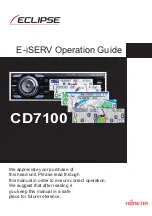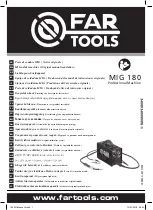
© Presby Environmental, Inc., Maine Design & Installation Manual, June 2019 Edition -22-
33.8 Replacement System
In the event of system malfunction, contact PEI for technical assistance prior to attempting Rejuvenation procedures.
In the unlikely event that a system needs to be replaced …
a) It can be reinstalled in the same location, eliminating the need for a replacement field reserve area.
b) All unsuitable material must be removed prior to replacement system construction.
c) Disposal of hazardous materials to be in accordance with state and local requirements.
d) Permits may be required for system replacement; contact the appropriate local or state agency.
e) If ES or SS pipe is not readily available, AES pipe may be used as an “in-kind” replacement for existing
systems.
f) Contact PEI for guidance on options for replacement system designs.
34.0 Installation Requirements, Component Handling and Site Preparation
34.1 Component Handling
a) Keep mud, grease, oil, etc. away from all components.
b) Avoid dragging pipe through wet or muddy areas.
c) Store pipe on high and dry areas to prevent surface water and soil from entering the pipes or
contaminating the fabric prior to installation.
d) The outer fabric of the AES and ES pipe is ultra-violet stabilized; however, this protection breaks down
after a period of time in direct sunlight. To prevent damage to the fabric, cover the pipe with an opaque
tarp if stored outdoors.
34.2 Critical Reminder Prevent Soil Compaction
It is critical to keep excavators, backhoes, and other equipment off the excavated or tilled surface of a bed. Before
installing the System Sand, excavation equipment should be operated around the bed perimeter; not on the bed itself.
34.3 Site Preparation Prior to Excavation
a) Locate and stake out the System Sand Bed, extension areas and soil material cover extensions on the
site according to the approved plan.
b) Install sediment/erosion control barriers prior to beginning excavation to protect the system from surface
water flows during construction.
c) Do not travel across or locate excavation equipment within the portion of the site receiving System Sand.
d) Do not stockpile materials or equipment within the portion of the site receiving System Sand.
e) It is especially important to avoid using construction equipment down slope of the system to prevent soil
compaction.
34.4 When to Excavate
a) Do not work wet or frozen soils. If a fragment of soil from about 9 in. below the surface can easily be
rolled into a wire, the soil moisture content is too high for construction.
b) Do not excavate the system area immediately after, during or before precipitation.
34.5 Tree Stumps
Remove all tree stumps and the central root system below grade by using a backhoe or excavator with a mechanical
“thumb” or similar extrication equipment, lifting or leveraging stump in a manner that minimizes soil disturbance.
a) Do not locate equipment within the limits of the System Sand Bed.
b) Avoid soil disturbance, relocation, or compaction.
c) Avoid mechanical leveling or tamping of dislodged soil.
d) Fill all voids created by stump or root removal with System Sand.
34.6 Organic Material Removal
Before tilling, remove all grass, leaves, sticks, brush and other organic matter or debris from the excavated system
site. It is not necessary for the soil of the system site to be smooth when the site is prepared.
34.7 Raking and Tilling Procedures
All areas receiving System Sand, sand fill and fill extensions
must
be raked or tilled. If a backhoe/excavator is used
to till the site, fit it with chisel teeth and till the site. The backhoe/excavator must remain outside of the proposed
System Sand area and extensions.
a) For in-ground bed systems, excavate the system bed as necessary below original grade. Using an
excavator or backhoe, tilt the bucket teeth perpendicular to the bed and use the teeth to rake furrows 2
in. – 6 in. deep into the bottom of the entire area receiving System Sand or sand fill (“receiving area”).
b) For elevated bed systems remove the “A” horizon, then use an excavator or backhoe to rake furrows 2
in. – 6 in. deep into the receiving area.








































